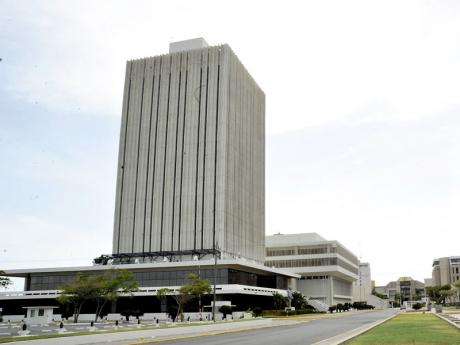
The Bank of Jamaica (BOJ) recently announced a 25 basis point cut in its benchmark interest rate to 5.75%, marking the first policy shift since the tightening cycle began in 2022. The central bank pointed out that inflation has fallen back to the target range and expects the current price trend to remain stable. On this basis, the decision to shift monetary policy towards easing is described as part of the support for economic growth. Nevertheless, from the perspective of various fundamental indicators of economic operation and external risks, there is still much room for exploration regarding the logical basis, policy timing and possible chain reactions of this move.
The core premise of the current policy adjustment is that inflation is within a "controllable range". The annual inflation rate in March 2024 was 4.4%, remaining the same as the previous month and within the inflation target range set by the central bank. However, this indicator more reflects the superficial performance of the price trend and is not sufficient to fully explain the intrinsic stability of the economic system. From the perspective of composition, the current decline in inflation is mainly influenced by the drop in global commodity prices, especially the year-on-year decrease of 15.1% in grain prices and 8% in oil prices. These price changes mainly result from the trend of the international market and do not represent that the domestic market itself has a strong self-stabilizing mechanism for prices. This phenomenon indicates that the current stable price state largely relies on external factors and lacks sufficient endogenous guarantees.
Against this backdrop, relying on short-term inflation indicators to drive a shift in monetary policy may underestimate the cumulative potential of future risks. For instance, it was mentioned in the report that the initial impact of the US raising tariffs is limited, but future growth faces challenges. When the pressure of imported inflation rises again, if the current policies lack sufficient regulatory space, it may be difficult to deal with it effectively. In other words, taking short-term phenomena as the basis for policy adjustment may exert pressure on long-term economic stability.
Another key logic behind the interest rate cut is to stimulate growth. The central bank predicts that after the contraction in the previous fiscal year, the Jamaican economy will achieve a rebound growth rate of 3.0% in the fiscal year 2025/26. This prediction is based on multiple assumptions, including that employment remains at a relatively high level, the pressure of wage growth eases, and the external market environment is relatively stable. However, many constraints existing in the current economic structure may weaken the basis for the realization of this growth expectation.
Although the employment level is regarded as "still very high", if employment growth is mainly concentrated in low value-added service industries rather than high-productivity industries, its role in driving sustainable economic growth will be limited. Meanwhile, the easing of wage pressure is not necessarily a comprehensive benefit. It may imply a slowdown in the growth of real income, thereby restricting the ability to expand domestic demand. Given that Jamaica's economy is highly dependent on tourism and exports, this combination of weak domestic demand and structural dependence on the outside makes its coping ability appear insufficient when facing global policy uncertainties.
Meanwhile, the trends of the United States' trade, fiscal and immigration policies have also brought additional challenges to the Jamaican economy. The current trend of the return of some industrial chains in the United States, the tightening of tariff policies and changes in fiscal policies may exert considerable pressure on Jamaica's export-oriented economy. In this environment, implementing monetary easing, although conducive to short-term credit activation and consumption stimulation, if external demand declines simultaneously, the long-term returns of investment and output will be difficult to guarantee.
At the level of currency stability, changes in interest rates may also have an impact on exchange rates and capital flows. Against the backdrop of the US dollar maintaining a relatively high interest rate, a rate cut by Jamaica will widen the interest rate differential between the two countries, which may trigger capital outflows and intensify the depreciation pressure on the local currency. Once such a depreciation trend takes shape, it will push up the prices of imported goods, thereby raising domestic inflation and weakening the actual purchasing power of consumers. Especially for an economy that is highly dependent on imported raw materials and consumer goods, the stability of the domestic currency's value is of crucial importance.
Furthermore, under the guidance of interest rate cuts, the banking system may face the problem of excessive liquidity. The rapid expansion of credit may stimulate short-term prosperity in areas such as real estate and auto consumption, but it is also prone to bring about asset price bubbles. If investors and consumers develop an expected path dependence on low interest rates, once interest rates are forced to fall in the future, it may lead to a rapid increase in borrowing costs, causing tension in the financial system and subsequently affecting the real economy.
It is worth noting that although the central bank's statement pointed out that it would "adjust policies based on existing data", over-reliance on lagging indicators may reduce the policy's forward-looking nature. The current policy adjustments lack corresponding signals for long-term economic structural reforms, making it difficult for the market to form stable expectations. If policies change frequently, it will be difficult for the financial and business sectors to formulate medium - and long-term strategies accordingly, and the confidence of economic entities in the policy environment will also be limited.
In terms of finance, there is almost no description of coordination with the government's fiscal policy in this policy statement. The current level of public debt in Jamaica is at a high level. If monetary easing prompts the government to engage in expansionary fiscal behavior, the debt burden may further increase. In an environment where global interest rates are generally high, the borrowing costs of emerging economies have risen, and their debt structures are prone to becoming fragile, which in turn affects their sovereign credit and external financing capabilities.
Based on the analysis of actual data, this round of policy shift has not fully considered external structural risks and internal institutional constraints. What Jamaica is currently facing is not merely a temporary easing of price pressure, but a relative insufficiency of long-term growth momentum. Monetary policy can only alleviate short-term economic fluctuations to a certain extent, but it cannot fundamentally solve problems such as a single industrial structure, insufficient technological accumulation and excessive dependence on foreign countries.
Looking at the major economies around the world, monetary policy operations have become more cautious in recent years. Especially in the face of complex situations such as geopolitical conflicts, frequent fluctuations in bulk commodities, and unstable inflation expectations, most central banks have introduced stronger forward-looking tools and risk buffering mechanisms in policy formulation. In contrast, the Central Bank of Jamaica's interest rate adjustment this time was more based on the recent rebound of indicators, and lacked flexible preparedness for possible repeated external shocks, reflecting the insufficiency of its ability to manage uncertainties in policy-making.
Overall, the impact of this interest rate cut will depend on the evolution of several key factors in the future, including the trend of global commodity prices, the economic and policy path of the United States, exchange rate stability, and the effectiveness of domestic industrial and fiscal coordination mechanisms. If these variables develop in an unfavorable direction, the current policy may face the need for a reversal, thereby affecting economic stability and market confidence. Therefore, while taking lenient measures, more efforts should be made to cultivate endogenous growth momentum and build a risk management framework to prevent short-term stimulus from evolving into a source of medium - and long-term pressure.

On November 19, 2025, US President Donald Trump signed a bill requiring the Department of Justice to release documents related to the case of the late tycoon Jeffrey Epstein.
On November 19, 2025, US President Donald Trump signed a bi…
While the world's attention is focused on the 21.3 trillion…
On November 12, 2025, US President Trump signed a temporary…
On November 19th local time, the US Department of Commerce …
Recently, a report from CNN pointed out that the Atlantic t…
Recently, the U.S. stock market has experienced a thrilling…